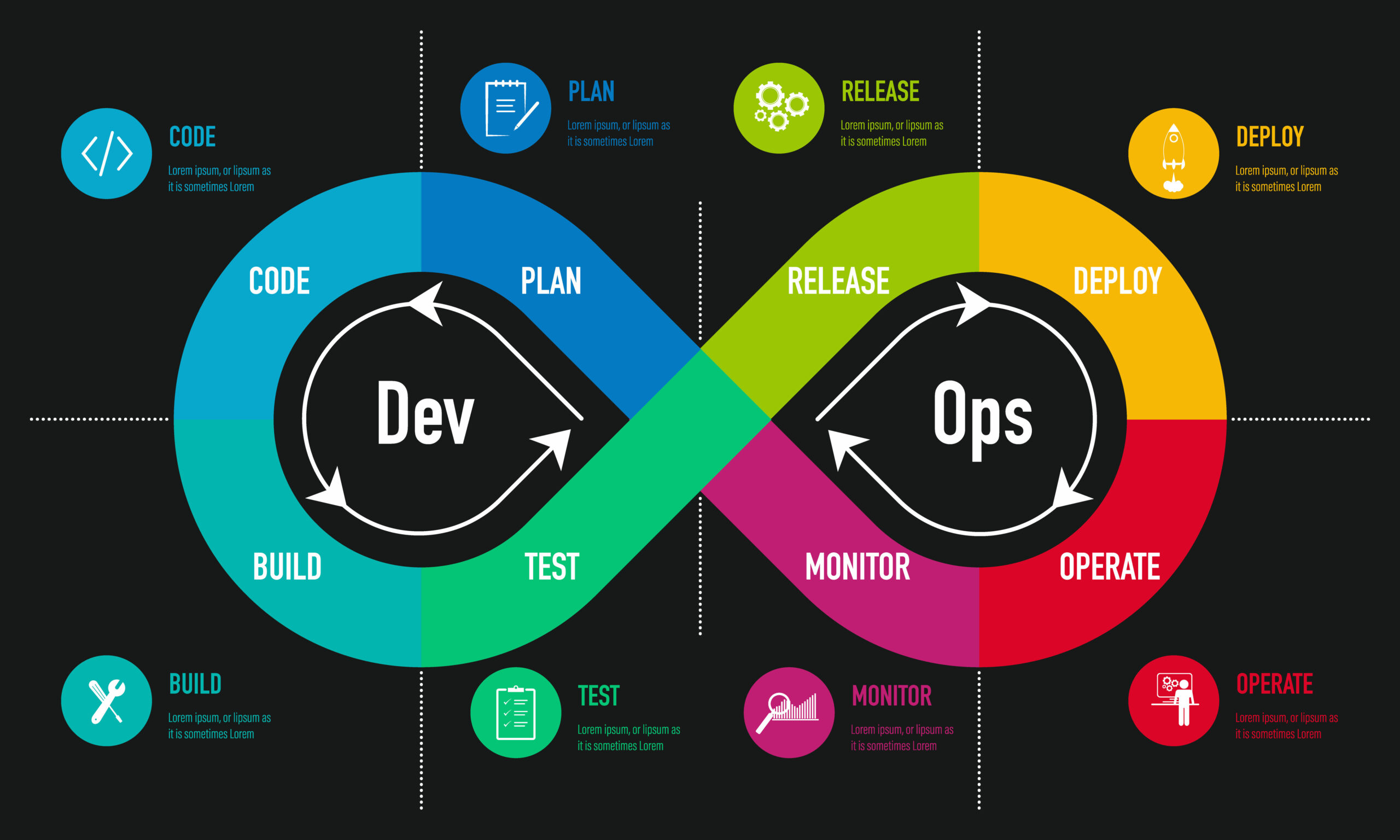Essential Steps to Launch Your Career as a DevOps Engineer
 Harendra Barot
Harendra Barot
Imagine a bustling city where cars zoom past intersections, and trains arrive at stations precisely on time. The drivers and train operators ensure everything runs smoothly, but behind the scenes, there's an unseen hero — the traffic controllers and engineers coordinating it all. In the tech world, this is the DevOps Engineer.
The journey to becoming a DevOps Engineer is as exciting as the role itself. Let’s dive into what a DevOps Engineer does daily and the skills and mindset needed to succeed.
The Beginning of the DevOps Engineer’s Day
Meet Raj, a DevOps Engineer at a mid-sized e-commerce company. Every morning, Raj starts his day with a stand-up meeting, a quick gathering of developers, QA testers, and operations teams. The goal? To ensure everyone is aligned and any roadblocks are discussed early.
In one such meeting, a developer mentioned a recent application deployment failure on the staging server. The error was vague, and Raj’s role was to investigate and ensure that future deployments would be smooth.
Lesson: Communication and collaboration are the heart of DevOps. Engineers act as the bridge between development and operations teams, ensuring the workflow is seamless.
Task 1: Monitoring and Incident Response
After the stand-up, Raj checks the monitoring dashboard. The platform uses tools like Prometheus and Grafana to track CPU usage, memory consumption, and application response times. A red flag catches his eye — one of the APIs has a 30% higher response time than usual.
Using logs from Elasticsearch and Kibana, Raj identifies the root cause: a new feature deployed last night introduced a performance bottleneck. He rolls back the change using the CI/CD pipeline built in Jenkins and informs the team about the incident.
Real-Life Insight: Companies like Netflix rely heavily on monitoring to maintain their services. A lag of even a few seconds can disrupt user experience. As a DevOps Engineer, you’ll need to anticipate and address such challenges quickly.
Task 2: Maintaining and Optimizing CI/CD Pipelines
Raj’s next task is to troubleshoot the CI/CD pipeline issue reported during the stand-up meeting. The Jenkins pipeline failed during the “build” stage due to missing environment variables. Raj updates the pipeline configuration to fetch variables dynamically from AWS Secrets Manager. After testing the fix, he re-triggers the pipeline, ensuring a smooth deployment.
Story Insight: During his early days, Raj didn’t know much about CI/CD pipelines. He learned by experimenting with Jenkins, reading documentation, and watching tutorials on GitHub Actions and GitLab CI. If you’re just starting, set up your pipeline for a small personal project.
Task 3: Infrastructure as Code (IaC)
Midday, Raj gets a ticket from the operations team to set up a new Kubernetes cluster for a feature requiring containerized microservices. Instead of manually provisioning servers, he writes a Terraform script to automate the process. Within minutes, the cluster is up, saving hours of manual work.
Example: Imagine managing a large farm where every crop row must be precisely irrigated. Terraform acts as the irrigation system, automating every task so you don’t have to water plants one by one.
What to Learn: To excel, master tools like Terraform, AWS CloudFormation, and Ansible. These tools allow you to define, deploy, and manage infrastructure through code.
Task 4: Automating Repetitive Tasks
Raj notices that manually restarting services after every deployment consumes time. To automate this, he creates a Bash script integrated with AWS Lambda. Now, after every deployment, the Lambda function automatically restarts services, saving time and reducing human error.
Real-Life Analogy: Automation is like setting up a coffee maker to brew coffee at 7 AM daily. Instead of doing it manually, you save time and effort. In DevOps, automation ensures repetitive tasks are handled consistently and reliably.
Task 5: Configuration Management
In the afternoon, Raj dives into configuration management. He uses Ansible to ensure all servers have the correct application versions, configurations, and dependencies. One server wasn’t updated properly during the last batch update, causing inconsistencies. Ansible’s playbooks allow Raj to fix this seamlessly.
Why It Matters: Imagine a fleet of delivery trucks where one is missing a GPS device. Configuration management ensures all trucks are equipped identically, so no one gets lost.
Task 6: Security and Compliance Checks
Raj receives an alert: a security vulnerability in one of the open-source libraries used by the platform. He quickly uses Snyk to scan dependencies and updates the vulnerable library. Raj also reviews AWS IAM roles, ensuring minimal access is granted to critical services.
Real-Life Insight: Data breaches can cost companies millions. For instance, a large retailer faced massive fines due to an AWS S3 bucket misconfiguration. As a DevOps Engineer, it’s crucial to prioritize security.
Pro Tip: Learn about IAM, encryption, and tools like Snyk or SonarQube for security analysis.
Task 7: Cost Optimization
Raj notices the company’s AWS bill is unusually high. After analyzing usage, he finds multiple idle EC2 instances and unattached EBS volumes. He writes a Python script to identify and delete such resources periodically. This reduces costs by 25%.
Example: Treat cloud resources like a car rental service. You don’t leave the car running when not in use. Similarly, DevOps Engineers optimize cloud usage to save costs.
What to Learn: Familiarize yourself with tools like AWS Cost Explorer and Kubernetes autoscaling for efficient resource management.
Task 8: Learning and Experimenting
In the evening, Raj spends an hour learning about GitOps, a methodology that applies Git for infrastructure management. He practices deploying Kubernetes configurations via ArgoCD, understanding how it simplifies version control for infrastructure.
Why It’s Essential: DevOps is an ever-evolving field. Continuous learning keeps you ahead. Many DevOps Engineers allocate time daily or weekly to upskill through platforms like Udemy, Coursera, or reading blogs.
How to Become a DevOps Engineer: A Practical Guide
If Raj’s story inspires you, here’s a step-by-step guide to kickstart your journey:
1. Master the Basics of Linux and Scripting
Why: Most servers run on Linux, and scripting automates repetitive tasks.
Skills: Learn commands, shell scripting, and tools like
awkandsed.Example: Automate server stats collection using a Bash script like
server-stats.sh.
2. Learn Version Control with Git
Why: Git is the backbone of collaboration in DevOps.
Task: Create a GitHub repository, commit changes, and learn branching.
3. Understand Continuous Integration/Delivery (CI/CD)
Why: Automating the testing and deployment process is key.
Tools: Jenkins, GitHub Actions, CircleCI.
Example: Set up a pipeline that builds, tests, and deploys your code.
4. Explore Cloud Platforms
Why: Most modern infrastructures are cloud-based.
Platforms: AWS, Azure, Google Cloud.
Certifications: AWS Solutions Architect, AWS DevOps Engineer.
5. Learn Infrastructure as Code (IaC)
Why: Automates and standardizes infrastructure provisioning.
Tools: Terraform, CloudFormation.
Example: Write a script to launch an EC2 instance and attach an S3 bucket.
6. Dive into Containers and Orchestration
Why: Containers simplify application deployment, and orchestration ensures scalability.
Tools: Docker, Kubernetes.
Task: Deploy a multi-container application on Kubernetes.
7. Master Monitoring and Logging
Why: Identifies performance issues and bottlenecks.
Tools: Prometheus, Grafana, ELK Stack.
Example: Set up an alert for CPU usage spikes.
8. Focus on Security and Compliance
Why: Secures sensitive data and prevents breaches.
Tools: AWS IAM, Vault, Snyk.
Example: Audit and fix IAM roles with excessive permissions.
9. Develop Collaboration and Problem-Solving Skills
Why: DevOps is about teamwork and addressing challenges efficiently.
How: Participate in open-source projects or join DevOps forums.
10. Stay Updated
Why: DevOps is a fast-changing field.
How: Follow blogs, attend webinars, and get certifications like Kubernetes (CKA).
A Glimpse into Raj’s Future
By the end of the day, Raj feels accomplished. He not only resolved incidents but also improved automation, optimized costs, and upskilled himself. Over time, his work will enable the company to deliver features faster, scale seamlessly, and maintain high system reliability.
Your Takeaway: If you’re aspiring to be a DevOps Engineer, remember it’s not just about tools or technologies. It’s a mindset of continuous improvement, automation, and collaboration. Begin your journey by building a strong foundation in Linux, scripting, and cloud platforms. With dedication and curiosity, you’ll soon become the hero ensuring smooth operations in the tech world.
Good luck on your journey to becoming a DevOps Engineer! 🚀
Subscribe to my newsletter
Read articles from Harendra Barot directly inside your inbox. Subscribe to the newsletter, and don't miss out.
Written by

Harendra Barot
Harendra Barot
I'm an IT professional and business analyst, sharing my day-to-day troubleshooting challenges to help others gain practical experience while exploring the latest technology trends and DevOps practices. My goal is to create a space for exchanging ideas, discussing solutions, and staying updated with evolving tech practices.